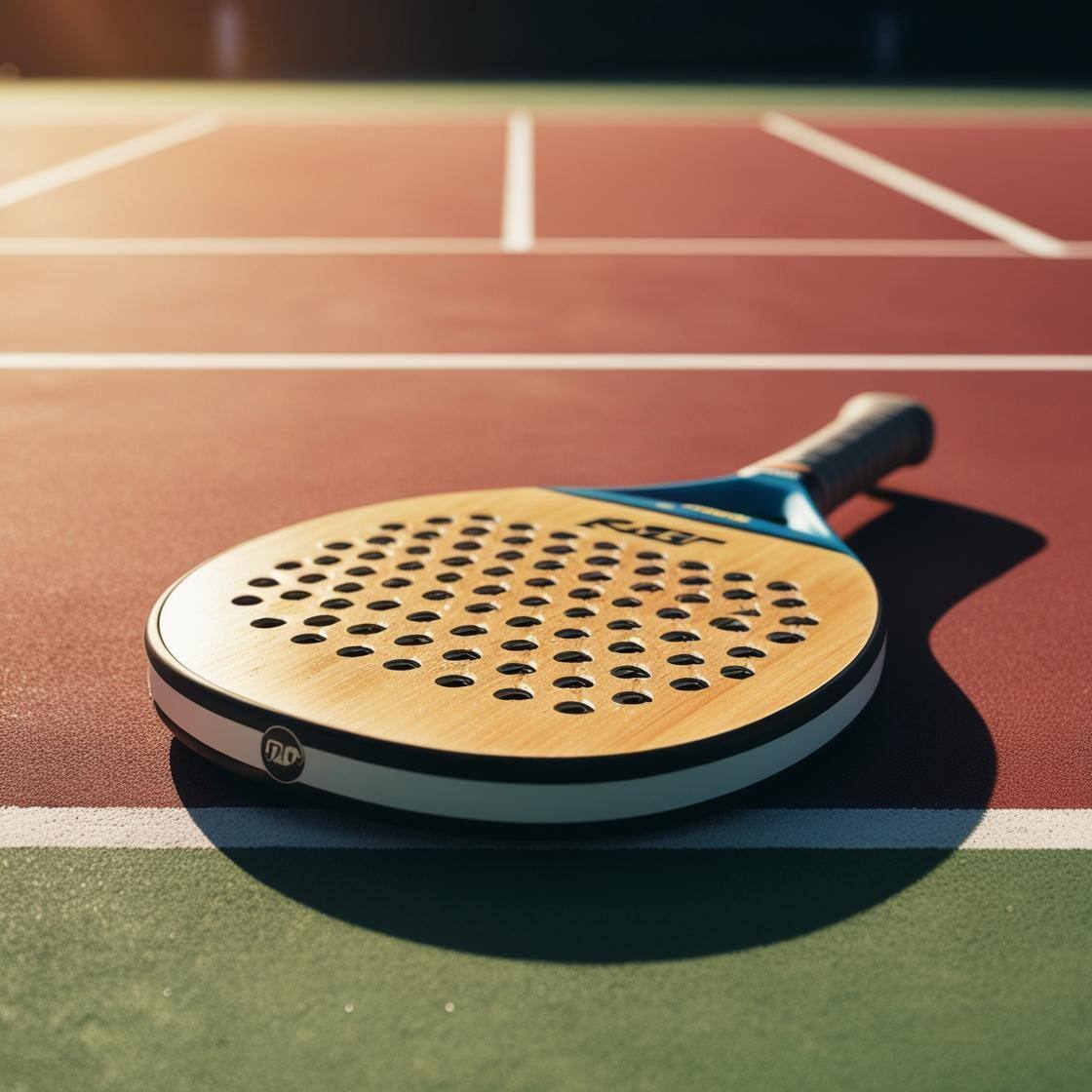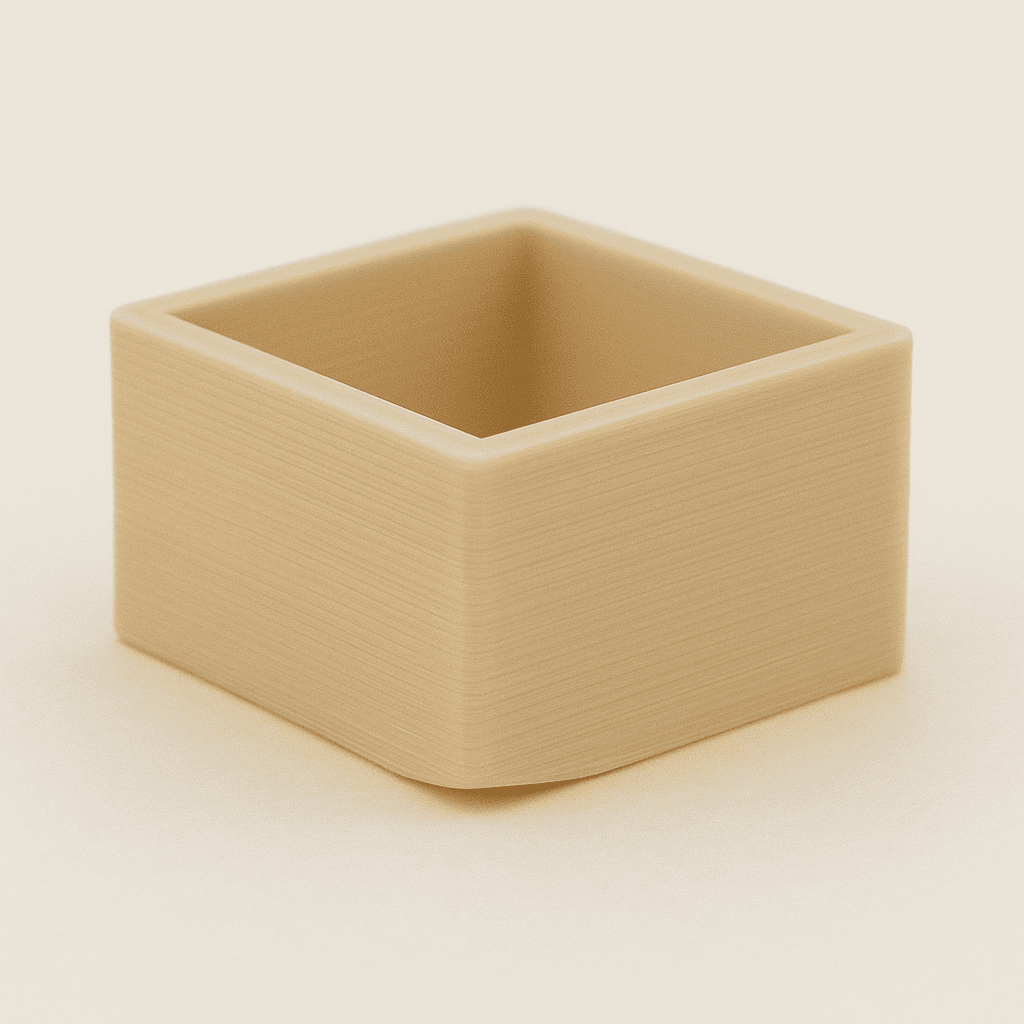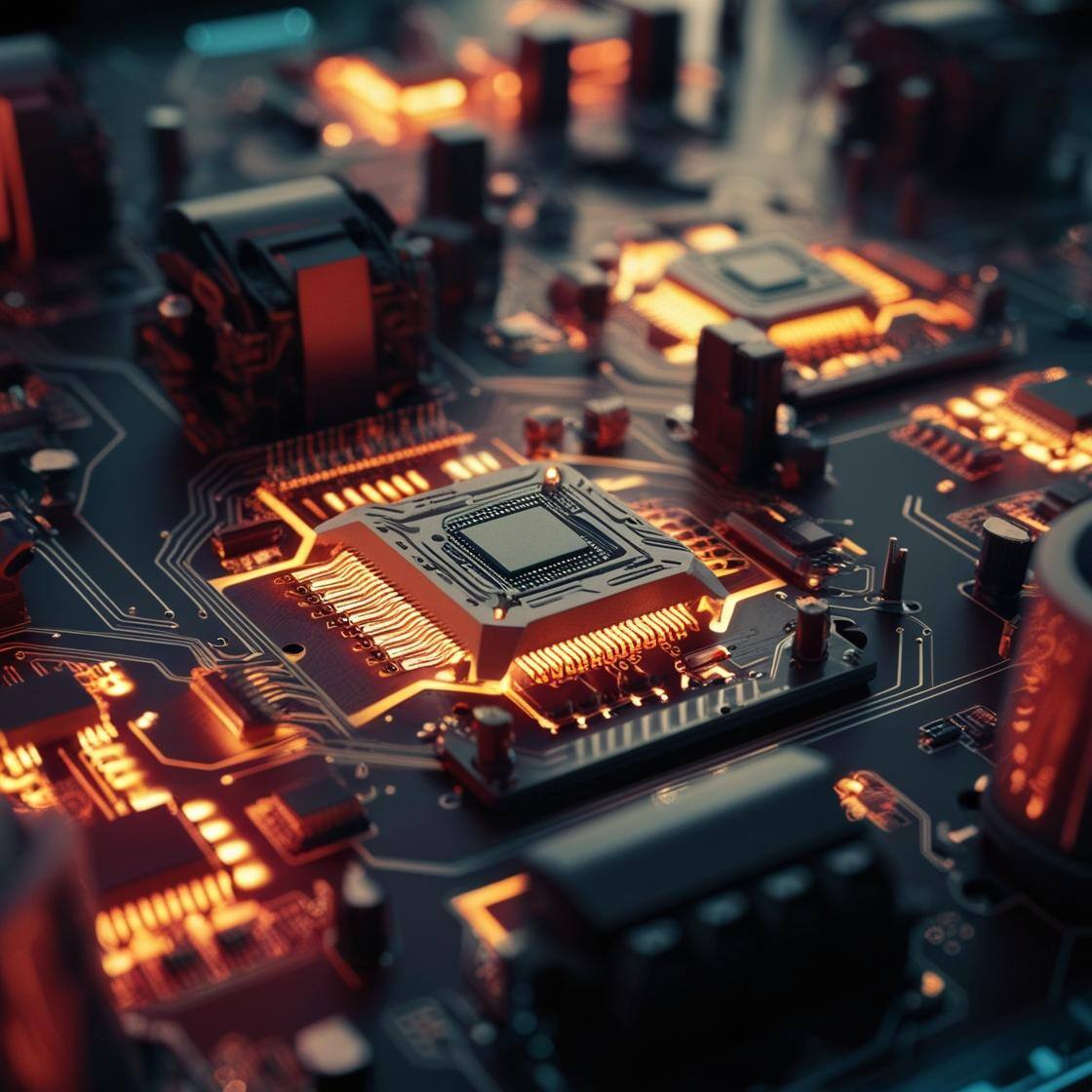6 min read
Warping
The phenomenon of "warping" is one of the most common problems in 3D printing, particularly when working with thermoplastic materials that tend to...
6 min read
![]() Weerg staff
:
Feb 20, 2025
Weerg staff
:
Feb 20, 2025

Padel has seen exponential growth in Italy and worldwide in recent years. A glance at sports clubs in major cities and smaller towns alike reveals an increasing number of courts dedicated to this sport. Players of all ages and skill levels are drawn to a dynamic, entertaining game that fosters social interaction. Meanwhile, another technological phenomenon has reached astonishing milestones: 3D printing. With the ability to produce customised parts and prototypes rapidly, additive manufacturing has carved out a significant role in various sectors, from aerospace to medicine. But how do padel and 3D printing intersect? Are there synergies that could transform or enhance the playing experience? This article delves into the connection between additive manufacturing and the world of padel, highlighting how this technology can support and innovate the industry—from equipment customisation to logistics and sustainability.
Padel originated in Mexico in the 1960s, but its true boom in Europe has only occurred recently, with Spain leading the way, followed by Italy, Sweden, France, and many other countries. Situated between tennis and squash, padel is played on a court enclosed by glass walls and metal mesh, which become strategic elements of the game. Padel rackets, smaller and more compact than tennis rackets, feature a solid, perforated surface made from materials such as fibreglass, carbon fibre, or composite blends. The balls, similar to tennis balls but slightly less pressurised, contribute to the sport’s unique characteristics.
The sport’s growing popularity is largely due to its accessibility: even beginners can enjoy the game almost immediately. With reduced movement compared to tennis, a smaller court, and walls that return the ball, padel is accessible to players of all ages and fitness levels. Additionally, the ability to play in doubles enhances its social appeal. These factors have transformed padel from a passing trend into a lifestyle for many players.
3D printing, or additive manufacturing, encompasses technologies that create three-dimensional objects from a digital model. Unlike subtractive production methods, such as milling or cutting, 3D printing builds objects layer by layer, adding material only where needed. The main advantages of 3D printing include:
Extreme customisation: Components can be designed to meet specific needs.
Shorter prototyping times: Development cycles for new products are significantly reduced, allowing for faster testing of ideas and designs.
Reduction in material waste: As an additive process, only the necessary material is used, offering environmental benefits.
On-demand production: Components can be manufactured based on actual demand, reducing storage and overproduction costs.
Initially, 3D printing was primarily used for rapid prototyping, but today it spans various industries, including aerospace, automotive, medical, and interior design. As technology advances and becomes more accessible, additive manufacturing is also carving out a crucial role in sports, from football to motorsports—and, of course, padel.
3D printing technologies offer the opportunity to create innovative, tailor-made products that cater to the needs of each player. Consider the numerous variables that influence a padel racket: weight, balance, materials, grip shape, and so on. Here are some areas where 3D printing is proving revolutionary for the world of padel:
Custom Rackets
Thanks to 3D printing, it is possible to create racket models with innovative geometries and designs. The inside of a padel racket often consists of an EVA (ethylene vinyl acetate) core or other polymers. Today, some companies are experimenting with the creation of complex lattice structures (lattice structure) inside the paddle's core, with the aim of improving control and feel. In addition, 3D printing makes it possible to build racquets with very precisely distributed weights to achieve different balances depending on the playing style (e.g. more attack-oriented or more defensive).
Ergonomic Grips and Handles
A padel racket’s grip is one of the most crucial elements for player comfort and performance. Unlike standard solutions, 3D printing enables the creation of custom handles based on the athlete’s hand shape, reducing the risk of injuries and fatigue. Textured grips can also be designed to enhance grip and breathability without the need for additional overgrips.
Accessories and components
It is not just rackets that benefit from additive manufacturing. 3D printing meets padel in the production of small accessories such as vibration dampeners, protective covers, personalised racket cases, keychains, wristbands, and even sportswear with 3D-printed technical inserts. This meticulous attention to detail allows for unique items tailored to each player’s preferences.
Court and Infrastructure Design
Large-scale 3D printing is opening new horizons in architecture. Although still futuristic, it is not out of the question that structural elements of padel courts—such as panels, seating, and roofing—could be produced using additive technologies in the future. This approach would optimise design in terms of acoustics, resistance to stress, and aesthetics, with tailor-made projects for every type of facility.
Integrating 3D printing into the padel industry brings significant benefits, but also some challenges to consider. Here is a more in-depth analysis:
Benefits
Advanced customisation: The ability to create tailor-made components adapted to each player's athletic or physiological needs.
Rapid prototyping: Racket and accessory manufacturers can test new shapes and materials more quickly and cost-effectively.
Reduced time-to-market: The transition from concept to finished product is much more streamlined with 3D printing.
Performance optimisation: New geometries and materials allow for experimental weight and balance configurations that, in many cases, enhance performance.
Challenges
Material costs: High-quality 3D printing materials, such as reinforced carbon fibres, can be expensive.
Production times: While rapid for prototyping, mass production using 3D printing may take longer if the production line is not optimised or the appropriate technology is not used.
Regulations and sporting standards: Sports equipment, especially at a competitive level, must meet specific standards. Before mass-producing 3D-printed products, materials and processes must be certified.
Durability and longevity: Although 3D printing has made great strides, objects subjected to repeated and intense stress, as in padel, must undergo rigorous durability testing.

In an era where personalisation is increasingly important, professional 3D printing services are essential for developing prototypes and producing small to medium-sized batches efficiently. Weerg is an Italian reference point for on-demand 3D printing and CNC machining. Offering a fast and easy online service, it enables designers, engineers, and companies to turn their ideas into real products with a competitive price-to-quality ratio and extremely fast turnaround times.
With cutting-edge technologies such as Multi Jet Fusion (MJF) and Fused Deposition Modelling (FDM), as well as access to high-quality materials (PA12, PA12 glass-filled, polypropylene, resins, etc.), Weerg can support:
Start-ups and racket manufacturers looking to test new shapes and materials.
Accessory companies interested in creating custom components (dampeners, handles, gadgets, protectors, etc.) without costly moulds.
Engineers and designers wanting to validate their solutions with functional prototypes.
Professional players who require high levels of customisation and technical performance.
Beyond innovation and customisation, 3D printing significantly contributes to environmental and social sustainability. Like many other sports, padel involves substantial equipment production and potential waste generation. Additive manufacturing helps by:
Reducing material waste: Only the necessary material is deposited to create an object, unlike subtractive methods that discard much of the original material block.
Speeding up product updates: Thanks to rapid prototyping, companies can make their products more durable or recyclable by quickly testing alternatives.
Optimising logistics: Producing on-demand, where needed, reduces transport and storage costs. Furthermore, spare parts and customised components can be printed close to the final user, further lowering the carbon footprint.
For padel, this approach means reducing waste during racket and accessory production. Additionally, highly customised products discourage a ‘disposable’ mentality, as players investing in tailor-made equipment are more likely to maintain and repair it rather than replace it.
Looking ahead, 3D printing is set to become a key component of the entire padel ecosystem. From material research to the creation of ever-lighter and more efficient rackets, as well as technical accessories and clothing, additive manufacturing will provide cutting-edge and tailor-made solutions. As costs decrease and technology advances, these services will become increasingly accessible to individual players and enthusiasts eager to explore new innovations.
Another exciting prospect is the use of 3D printing to enhance training and education in padel. Anatomical models, motion simulations, and visual aids could help coaches improve players' understanding of swing mechanics and grip techniques. Likewise, 3D printers could be used to develop prototype robots capable of launching balls for training, improving shot consistency and reducing the need for human partners in solo practice sessions.
The synergy between 3D printing and padel is still in the development phase, but the signs are clear: technological innovation is paving the way for extraordinary opportunities for all players in the sport, from racket and accessory manufacturers to professional players and simple enthusiasts. The increased accessibility of 3D printing technologies, combined with the constant search for better performing solutions, already offers concrete results in terms of customisation, comfort, sustainability and reduced development time.
In a growing market such as padel, the ability to differentiate oneself through tailor-made, quality products can make all the difference. Weerg, with its consolidated experience and an online service dedicated to companies and individuals, is an ideal partner for those who want to experiment, test and produce their ideas by exploiting the advantages of additive manufacturing. Whether it is a small accessory or an entire racket, 3D printing can provide the right solutions to make padel even more exciting, safe and innovative.
The future challenge is to integrate these technologies in an increasingly harmonious manner, certifying materials and methodologies to ensure maximum quality and full compliance with regulations. But if we look at the successes of other sports disciplines that have already opened up to the 3D printing revolution - from cycling to motorsport - we can be sure that padel will also reap the benefits. One thing is certain: innovation does not stand still, and the combination of padel and 3D printing has all the credentials to leave a tangible mark on the sports landscape. Let's get ready, then, for futuristically designed paddles, customised accessories and tailor-made solutions that will make padel matches an increasingly unique and enjoyable experience for players of all levels.

6 min read
The phenomenon of "warping" is one of the most common problems in 3D printing, particularly when working with thermoplastic materials that tend to...

6 min read
3D printing and nanotechnology are two fields of research and innovation that, at first glance, might appear worlds apart. The former focuses on...

6 min read
Padel has seen exponential growth in Italy and worldwide in recent years. A glance at sports clubs in major cities and smaller towns alike reveals an...